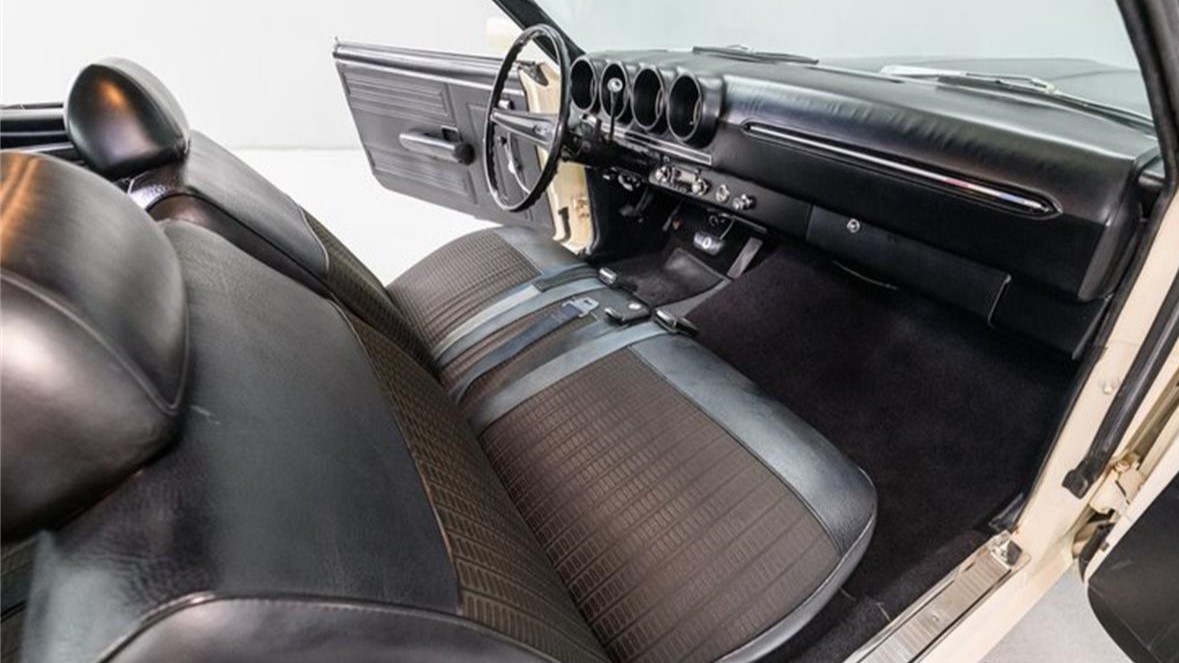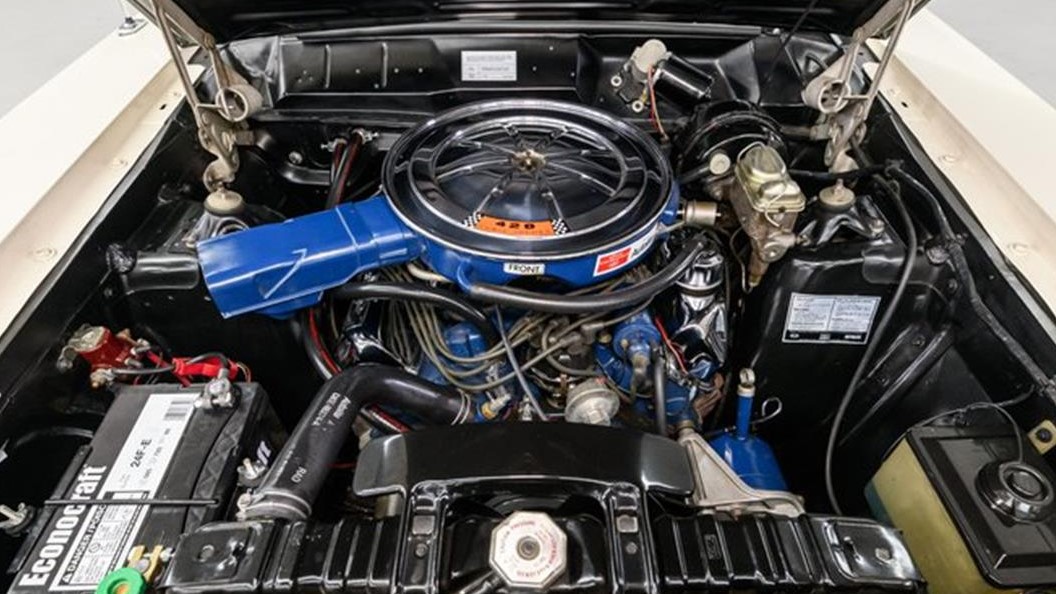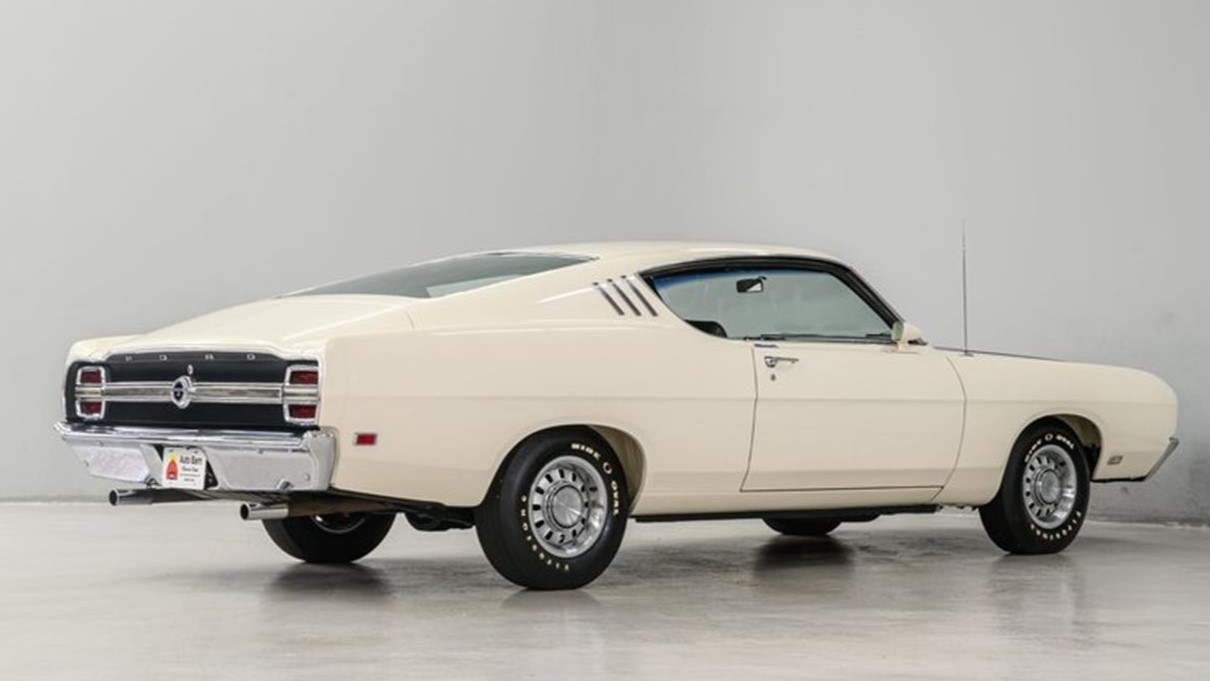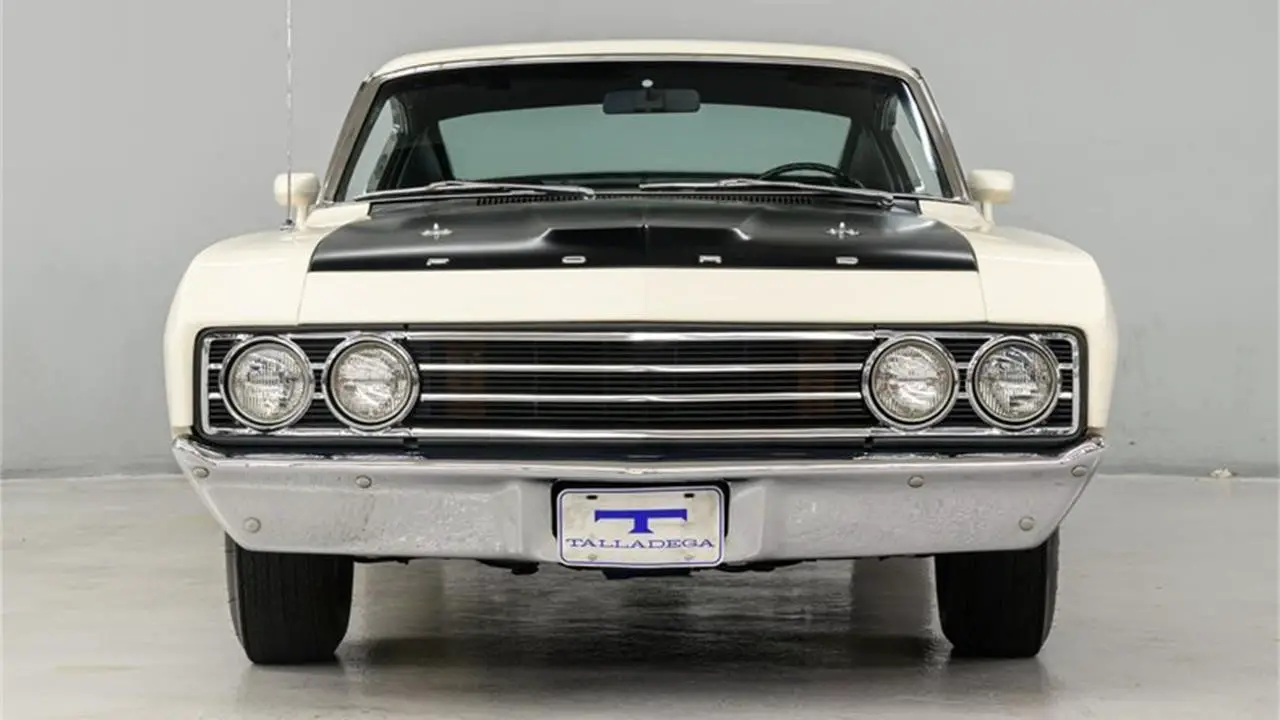As far as I can tell, the 1966-67 Dodge Charger was the first vehicle to homologate a body modification for NASCAR. Dodge’s foray into aerodynamics eventually led to the 1969 Charger 500. Ford, in all its Total Performance glory, responded with the 1969 Torino Talladega, a car that actually wasn’t a Torino . . . wait, how does that make sense? Read about our Pick of the Day to learn more about this paradoxical Ford. It’s for sale on ClassicCars.com by a dealership in Concord, North Carolina. (Click the link to view the listing.)
In 1968, Ford was racing its redesigned Fairlane, now available in fastback form. However, Ford marketed it as a Torino, the new model at the top of the series. While the race cars were equipped with 427s, none were built for the street, though Ford listed it in brochures.
During this time, Dodge had a redesigned Charger that looked great, but apparently it didn’t feel great on the racetrack—it seems that the inset grille induced drag, and the tunneled backlite created instability and lift. The solution, thanks to wind-tunnel testing, was to flush the nose with a 1968 Coronet grille and make the rear window flush. The more slippery Dodge made Ford take notice and get to work on a competitor.

Starting with a Fairlane-based 1969 Cobra SportsRoof, Ford made the front end slipperier by extending the nose by six inches and installing a flush-mounted grille, then added a modified rear bumper to the front, which also functioned as an air dam. But the nose wasn’t the only aero modification. The rocker panels were tucked under to allow the car to run closer to the ground within the rules of NASCAR.

Of course, Ford needed to build at least 500 Torino Talladegas for the street. Each Q-code (non-ram air 428 Cobra Jet) Cobra SportsRoof converted into a Talladega featured a black hood and tail panel, a black vinyl and cloth bench seat and column-shift heavy-duty C6 automatic, an oil cooler, staggered shocks, and a nine-inch rear end with a 3.25:1 open differential. Several of those features were picked from certain packages or configurations especially for the Talladega. All 750 built were painted Wimbledon White, Royal Maroon, or Presidential Blue and rolled on whitewall tires. An emblem or decal (running change) with a Ford blue oval and “T” was placed above the door handles, with a dual “flow” stripe extending the full length of the car at the beltline; inside, a Talladega badge was placed on each door panel.

Initially, these were raced with the 427, but then they became recipients of the Boss 429. All told, the racing Torino Talladegas won 29 Grand National races through the 1970 season, which was superior to any other aero car. Those included the 1969 Dodge Charger Daytona and 1970 Plymouth Road Runner Superbird, both of which were created to one-up the Torino Talladega.

This Wimbledon White 1969 Ford Torino Talladega has been “carefully restored” and now features argent styled wheels from a Torino GT. “The black broadcloth/vinyl interior is in outstanding condition and is optioned with an original tachometer gauge package,” says the seller. “Accents include … argent wheels with caps-rings that mount period-correct Firestone Wide Oval bias-ply tires.”

Have you priced a Mopar wing car lately? As a NASCAR homologation legend, this Fairlane-based Cobra masquerading as a Torino will cost you $88,995, which sounds like a bargain in comparison.
Click here for this ClassicCars.com Pick of the Day.

Comments are closed